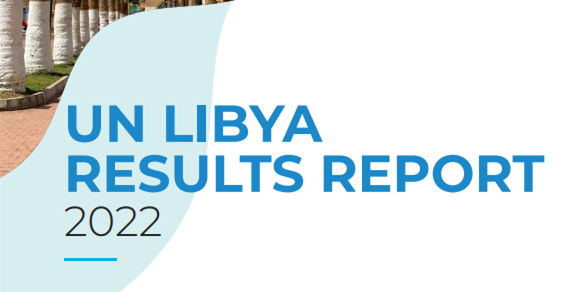UN Experts Assist in Aftermath of Brak Al-Chati Ammunition Explosion
5 December, 2013 - A United Nations team of ammunition specialists is offering technical advice to local authorities on the recovery work and is assessing the state of an Ammunition Storage Area at Brak Al-Chati in southern Libya where an explosion on 28 November killed over 40 people and injured many others.
The team from the United Nations Mine Action Services (UNMAS) was dispatched to the area near the main southern Libyan city of Sabha following the tragic incident to assess the situation and offer assistance to the local authorities. The United Nations also placed three Explosive Ordnance Disposal teams on standby to start clearing the perimeters of the site explosion if required by the local authorities.
In addition to the technical advice on the safe handling of ammunition and recovery work after the explosion, the UN team of experts at the site is also assessing to determine if more bunkers are at risk after looting. Several days after the explosion, Libyan Civil Defence teams were still working at the site clearing the debris and looking for bodies of victims.
Three bunkers have exploded in the accident, which appears to have been caused by looters igniting a fire to shed some light on their work. There are clear indications that the looting has been going on for an extended period of time, with numerous, if not all, of the 20 bunkers subject to at least partial looting. It is also clear that complete projectiles was looted and not only copper or aluminum, believed also to be a favorite target of looters.
The Brak Al-Chati explosion highlights the issue of weapons proliferation in Libya and the dangers it poses. These arms and munitions and their continuing hazardous storage in easily accessible areas present a significant challenge to the Libyan government and the international community.
According to information available to UNMAS, the Brak al-Chati facility is one of 47 Libyan Ammunition Storage Areas out of which 21 were damaged beyond repair during the 2011 revolution. Consequently, thousands of tons of munitions are unsecured and exposed to the harsh climate of Libya which causes the ammunition to become unstable and to explode easily if handled by inexperienced hands.
"Most of the time the munitions lie scattered in the Ammunition Storage Areas which facilitates their looting and their handling by untrained individuals puts them at the very serious danger of explosions with often fatal results," said Diek Engelbrecht, the Head of Arms and Ammunition Advisory Section at the United Nations Support Mission in Libya (UNSMIL).
The United Nations is working with the Libyan Armed Forces, military councils and some local revolutionary brigades to monitor and advise on the accounting, safe storage and control of arms and ammunition, the registering of weapons, and the clearance of explosive remnants of war. But time delays, funding shortfalls and the time-consuming process of building up trust from locality to locality have resulted in large amounts of unguarded weapons posing a number of threats, including to the safety and security of people.
Nearly 200,000 explosive remnants of war were cleared from both residential and military facilities in 2012. But the number remaining, in a country where each resident controls an average of 3.5 weapons and massive amount of ammunition remain discarded in loosely guarded depots dating back to the former regime days, still runs into the hundreds of thousands.
UNMAS launched an appeal on 8 July 2013 for funding to implement a sustainable and environmentally sound, three-step way of disposing ammunition through clearing infected territories, destroying expired munitions, reclaiming materials that can be recycled and finally building secure storage facilities.
 United Nations Peacekeeping
United Nations Peacekeeping UN
UN








